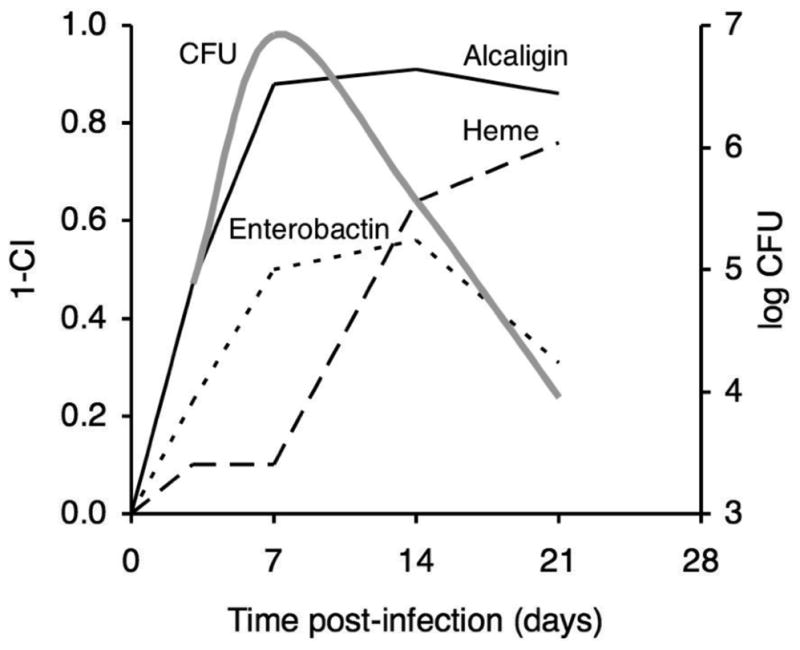Fig. 5.

Relative importance of iron systems for in vivo fitness of B. pertussis at various phases of infection. Mean competitive index values from mixed infection competition experiments involving co-infection of mice with wild-type and alcaligin (Brickman and Armstrong, 2007), enterobactin (see Fig. 4), or heme (Brickman et al., 2006) receptor mutant strains were used to calculate a fitness index value (FI, calculated as 1 − mean CI), at various times post-infection. The FI provides a measure of the relative in vivo importance or fitness contribution an iron system for multiplication and survival of B. pertussis under the existing host niche conditions. Solid line, alcaligin system; dotted line, enterobactin system; dashed line, heme system. A plot (grey line) showing CFU levels that are typical of B. pertussis mouse respiratory infections is overlaid for reference.
